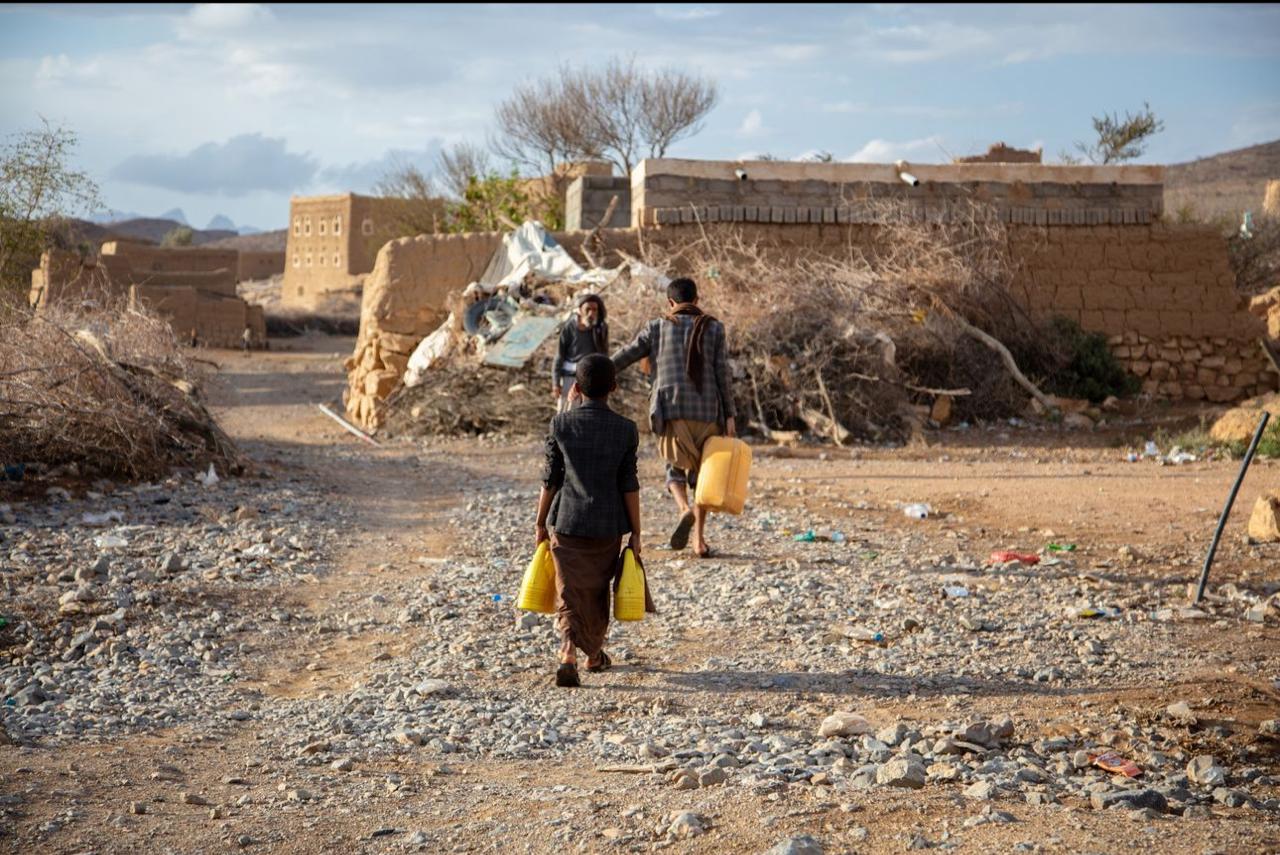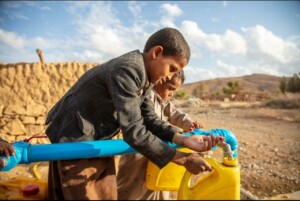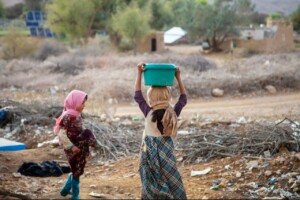We Communicate For Happy Children
 Yemen: Millions of children are asking for aid
Yemen: Millions of children are asking for aid 
Yemen was among the poorest countries in the Arab world even before the outbreak of war in early 2015, and the conditions of children there were already deteriorating. More than nine years after the war, and although the intensity of battles decreased two years ago, the situation of children is still at stake. From the fall of many of them as victims as a result of the remnants of war and the continuation of intermittent fighting to the economic crisis, the spread of epidemics and diseases, displacement, malnutrition, and the deprivation of education, adequate housing, psychological and social support, and other basic rights guaranteed by the Bill of Child Rights.
Since the outbreak of the war in Yemen, more than 11,500 children have been killed or injured due to war-related causes. Of these, 3,900 were killed, and 7,600 were wounded, according to UNICEF estimates at the end of March 2024. This comes at a time when many children are being killed as a result of the continuing intermittent fighting and exchanges of fire in many parts of the country and because of landmines and explosive remnants of war.
On the nutritional level, millions of Yemeni children have been suffering from severe food insecurity for years, with international organisations warning that the country is sliding into famine. The United Nations estimated at the beginning of this year that 17.6 million people would face acute food insecurity during 2024, noting that this is one of the highest rates of malnutrition ever recorded. In this context, UNICEF explained that more than 2.7 million children currently suffer from acute malnutrition, while 49% of children under the age of five suffer from stunting or chronic malnutrition.
 Photo source: UNICEF
Photo source: UNICEF
Through its official website, UNICEF indicates that “only 15% of children (in Yemen) eat the minimum acceptable amount of food they need for their survival, growth, and development.” UNICEF warns that “the nutritional status of women of childbearing age is considered a matter of great concern,” explaining that “since 1997, there has been no improvement in women’s nutritional status (in Yemen), as a quarter of them suffer from malnutrition, which leads mothers and pregnant women to increased risk of poor pregnancy outcomes, including difficult labour, premature or low birth weight, and post-partum haemorrhage.”
This comes at a time when the health system in Yemen has been subjected to massive destruction over the years of war, which has led to the disruption of essential services in health facilities. In this context, UNICEF explains that the outbreak of epidemic diseases and water-borne diseases, such as cholera and diphtheria, demonstrates the seriousness of what the public health sector is going through. It also warns that “the lack of funding exposes 1.7 million Yemeni children to the risk of contracting infectious diseases due to insufficient access to clean water and sanitation.” With the system’s inability to address the increasing emergence of diseases, families struggle to obtain basic medical care, according to the World Health Organisation.
As for the educational level, there are currently more than 4.5 million children out of school, according to UNICEF estimates this May. Through its official website, the organisation expects that the number of children suffering from disturbances affecting their education reaches about 6 million students. This comes at a time when the attacks on school children, teachers, and educational infrastructure since the beginning of the war have had devastating effects on the country’s educational system and on the opportunities of millions of children to obtain education, according to UNICEF.
 Photo source: UNICEF
Photo source: UNICEF
The international organisation reported in previous statistics that 2,916 schools (at least one out of every 4 schools) were destroyed, partially damaged, or used for non-educational purposes. Among the crises that burden the educational structure in Yemen, according to UNICEF:
In short, more than nine years after the Yemen war, there are still about 18.2 million Yemenis, thus about half the population, including about 10 million children, in urgent need of aid. Based on this tragic situation, the voices of 188 humanitarian organisations, including UN agencies, demanded that the existing funding gaps in Yemen be addressed. On May 6, an urgent appeal to provide $2.3 billion for the humanitarian response plan in Yemen for the year 2024 was launched.
